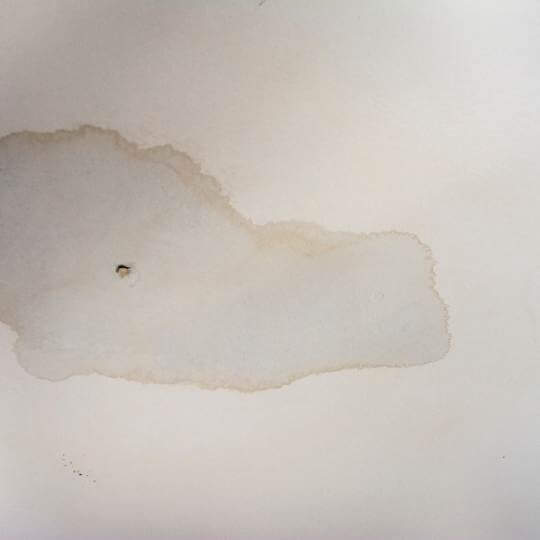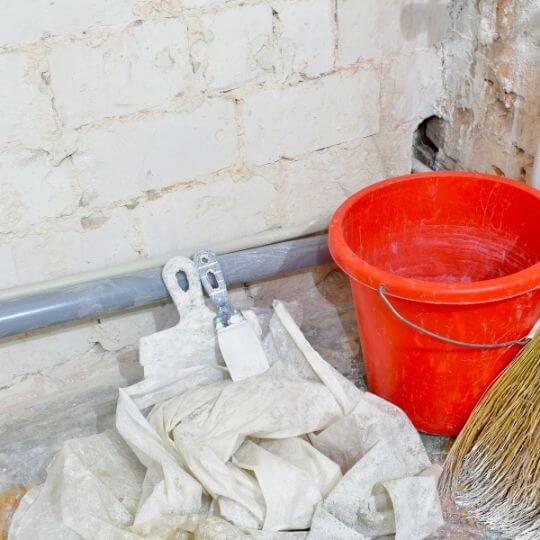One of the most common problems associated with basements is water seepage in basement after rain. From a small amount of moisture to massive puddle accumulations, a damp basement can cause many problems.
Water present in the basement can lead to mold and even cause damage to the foundation. Eventually, it can cost you an excessive amount of money in repairs if the water invasion consists. Therefore it is essential to know how to stop water seepage in basement floor and walls.
Causes Of Water Seepage In Basement

When leaks in the basement occur, it does not mean that the home was constructed poorly or that a catastrophe has taken place. In most cases, it is the combination of time and natural forces. Nonetheless, leakage in the basement can worsen due to some man-made factors.
When rainwater, groundwater, or melting snow saturate the solid around the foundation, it can leak through the walls. [1]
When cracks are present, the water will penetrate porous concrete or masonry walls in the form of water vapor.
Water pressure from soil around the foundation is the most common cause of leaks in the basement. This water pressure can occur in two forms and can seep through both the basement walls and floor.
Hydrostatic Pressure
There is water everywhere in the ground, even though it might not seem like it. The water table is the level at which the groundwater exists, and it varies widely. In other words, a place that is near a lake, for example, will have a higher water table compared to areas further from water. [2.]
This water table will rise when stormwater is not absorbed by the soil closer to the surface. So if heavy rain or snowmelt occurs, the surface soil will eventually become saturated, leaving unabsorbed stormwater. Hence the reason for the water table to rise.
The rise in the water table under a foundation will create hydrostatic pressure against the foundation. Therefore water is forced into the basement and can develop leaks opportunistically.
Lateral Pressure
Water can also be absorbed by the soil that surrounds the foundation between the flooring and the surface. However, under normal weather conditions, this soil should drain.
The types of soil that surround your home will also play a role in the absorption. For instance, soils like sand and loam do not absorb as much water as they drain reasonably quickly. On the other hand, clay soil is an excellent example of soil that does not drain well, absorbs water, and expands. [3]
Another thing that can influence lateral pressure is a clogged gutter or a downspout that does not extend away from the foundation. This can cause volumes of water to accumulate next to the foundation.
One or a combination of these factors can then lead to soil expansion, creating lateral pressures against the foundation. This will cause damage to the foundation, hence the reason water seeping through foundation slab.
Diagnose the Water Problem
Sometimes the reason for water present in your basement is due to high indoor humidity. If you are uncertain whether humidity or water leakage is the problem, you can do a DIY test.
Tape a piece of aluminum foil to your basement wall and inspect it a couple of days later.
If you find moisture on the outside surface of the foil, it means the basement has high indoor humidity. Moisture present behind the foil means that the water is leaking through the walls.
Sources Of Water Seepage In Basement

Water Seepage In Basement Floor
Cracks are inevitable, no matter the quality of the basement’s cement flooring. These cracks will create an entry point for water. When it comes to cement flooring, shrinkage cracks are usually the most common. [4]
Hydrostatic pressure can cause water to leak through your basement floor. The water will press upward on the basement floor and cause cracks. Water seeping through basement floor cracks will occur as soon as the water table rises.
How To Stop Water From Seeping Through Basement Floor

If the cracks are small, one can use a simple concrete patching compound to patch the area with a water-resistant seal. This can be an easy DIY repair, but sometimes a professional is needed to ensure high quality.
Another solution to the hydrostatic pressure leak is to give the groundwater another path to go. By installing an interior drain tile under the basement floor, one can accomplish this. An interior drain tile, also known as a perforated pipe system, will take in groundwater through its perforations and carry it to a sump basin. The sump pump will discharge the water from the basement. No maintenance is required for interior drain tile if installed correctly.
Avoid Painting Over the Cracks

Some homeowners think that a layer of paint over the concrete cracks will solve the moisture problem. However, this is a misconception as it may only work for the short term. Eventually, the paints will crack and start to peel, which will leave you back at square one.
In addition, paint is not waterproof, and even those that are can not withstand large amounts of moisture. Therefore painting over the cracks is not a solution. The best ways to fix the problem is with a concrete patching compound or an interior drain tile installation.
Water Seepage Through Basement Walls

A crack in basement wall leaking water is just as common as basement floor leaks. This can quickly lead to the emergence of mold spores or efflorescence on the walls. [5.]
One of the most common reasons for a leaking basement wall in a poured concrete wall is a non-structural crack. Lateral pressure or minor settling of the foundation can cause these cracks. Another reason for leaks in a poured concrete wall can be because of minor flaws in the pouring process. These flaws can create porous spots which will eventually let water seep through the walls.
Masonry foundation walls on the other hand, are strong and are unlikely to crack due to lateral pressure. However, their weak point for seepage is their mortar joints that hold the structure together.
Cracks can be caused in mortar joints even through minor foundation wall movement. Some masonry materials are porous by nature and will allow seepage through the wall. Concrete blocks, for example, might have large cavities present that hold water and worsen the seepage problem.
Water seepage through the basement walls can also come across over the top of the foundation wall. A small gap is often present between the top of the foundation wall and the sill plate of the above-ground structure. When, for example, an improperly sloped structure like a deck or patio causes the rainwater to run towards the house, the water will enter the basement through the opening. In this case your house needs to have a working sump pump.
How To Stop Water From Seeping Through Basement Walls

The best way to repair wall cracks is to inject expanding polyurethane into the interior. It will fill and seal the crack out to the soil. The injected polyurethane [5] will cure and stay flexible to prevent minor foundation movement from reopening the cracks.
If you can not reach the cracks from the interior, you can repair them from the outside. In this case, the hole at the site of the crack needs to be filled with sodium bentonite clay. The clay will form a permanent yet pliable barrier outside the foundation that will keep the water out of the basement.
A permanent solution to water seepage through the basement walls is by installing an exterior waterproofing membrane. This usually involves the process of installing a thick coating of asphalt-modified polyurethane to the wall. When the materials cure, it forms a waterproof barrier covered with insulation materials or heavy-duty drainage boards. This kind of installation will ensure the water can channel down the wall.
In addition to an exterior waterproofing membrane, exterior drain tile can be installed as well. The exterior drain tile will carry groundwater away from the foundation to a sump pump.
Water Seepage Through Basement Window Wells
Another source of water seepage in the basement can be a poorly installed window. Window wells can accumulate water from heavy rain if the drain is clogged or missing. If the basement windows are poorly installed, the water will leak in. Seepage around windows wells can also occur if the water causes enough pressure to push the window in.
How To Stop Groundwater Seepage Through Window Wells
One of the most straightforward solutions to window well leakage is to install a drain that leads to a drain tile. If it already has a drain but is clogged, it can be cleaned out or replaced.
Either way, it is best to install a fitted window well cover. which will keep lawn clipping, leaves, and debris out of the drain.
If the window well liner has separated from the foundation, it can either be reattached or replaced. This will keep the groundwater and soil from entering the well.
Final Thought
As you can see, there are many causes and sources of water seepage in basement. There are also numerous solutions to the problem. Basement seepage repair cost will vary from one solution to another and the company that does the repairs.
Either way, you will need a trained and experienced basement waterproofing contractor to diagnose and fix the problem. If the installations or repairs are not done correctly, the seepage may return, and further damage may occur. Therefore it is always best to ensure that you have insurance for covering plumbing issues.

Michael Davis is a heating & plumbing expert who currently works as independent contractor in SC. He also writes for Plumbertip.
For almost 10 years he worked on various plumbing tasks across South Carolina.


